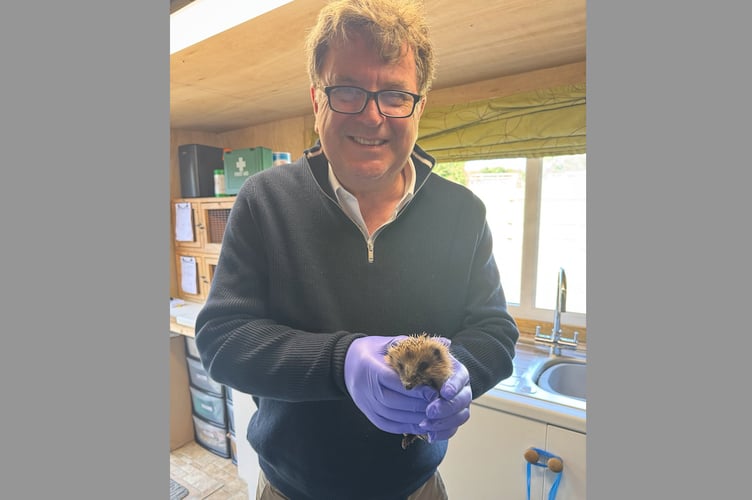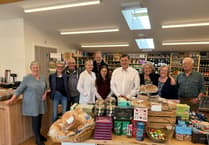I RECENTLY had the pleasure of visiting Greatfield Hedgehog Rescue just outside Okehampton, where I met the extraordinary Pam Pemberton - a woman whose dedication to our native prickly mammal is giving hundreds of hedgehogs a second chance at life.
Hedgehogs are a cherished part of our natural heritage. They’ve been present in Britain for at least half a million years and are woven into our folklore, from Beatrix Potter’s “Mrs Tiggy-Winkle” to modern wildlife campaigns.
But despite their long history here, hedgehog numbers have plummeted, down by an estimated 50 per cent in rural areas since the millennium.

Habitat loss, road traffic, garden chemicals, and lack of access to safe green spaces have all taken their toll. Hedgehogs now face real threats even in rural areas like ours.
At Greatfield, Pam provides expert care to hedgehogs brought to her from across Devon, many of them found injured or orphaned.
Local practices, including North Park Vets who I recently visited in Okehampton and North Tawton, often refer hedgehogs to her when they are brought in by concerned members of the public.
A large number of the injuries Pam sees are caused by strimmers - one of the most common and avoidable threats to hedgehogs.
These quiet, nocturnal animals often rest during the day in long grass, under hedges, or among leaf piles. A quick check before strimming can prevent truly horrific injuries.
Another preventable danger is dogs being let out at night in areas where hedgehogs are active. Even well-meaning family pets can cause serious harm.
If you know hedgehogs are in your area, please keep dogs indoors after dark or accompany them outside.
Pam runs the rescue centre entirely through donations and her own fundraising.
One brilliant initiative involves selling handmade hedgehog houses - crafted by Men in Sheds Tavistock - with all proceeds going directly to the care of rescued animals.
These houses provide vital shelter, especially during hibernation season, and offer a practical way for households to support local wildlife.
But if hedgehogs are to thrive, we need to think beyond individual gardens.
Wildlife corridors, connected areas of green space, are essential, enabling hedgehogs to move safely between habitats. Dead hedges, log piles, and wildflower patches all provide crucial cover and food.
Hedgehogs are mostly insectivores, feeding on beetles, caterpillars, worms and slugs.
They roam up to a mile a night in search of food and mates, and their presence is a sign of a healthy local ecosystem.
Everyone can play a part in helping hedgehogs recover.
Make a small hole in your garden fence to create a hedgehog highway, leave out fresh water, avoid using slug pellets, and let parts of your garden grow wild. These small actions add up.
Pam’s work is a shining example of grassroots conservation. I left Greatfield deeply impressed, and determined to help spread the word. Hedgehogs belong in Devon. Let’s all do our bit to keep them here.
Mel Stride
MP for Central Devon





Comments
This article has no comments yet. Be the first to leave a comment.